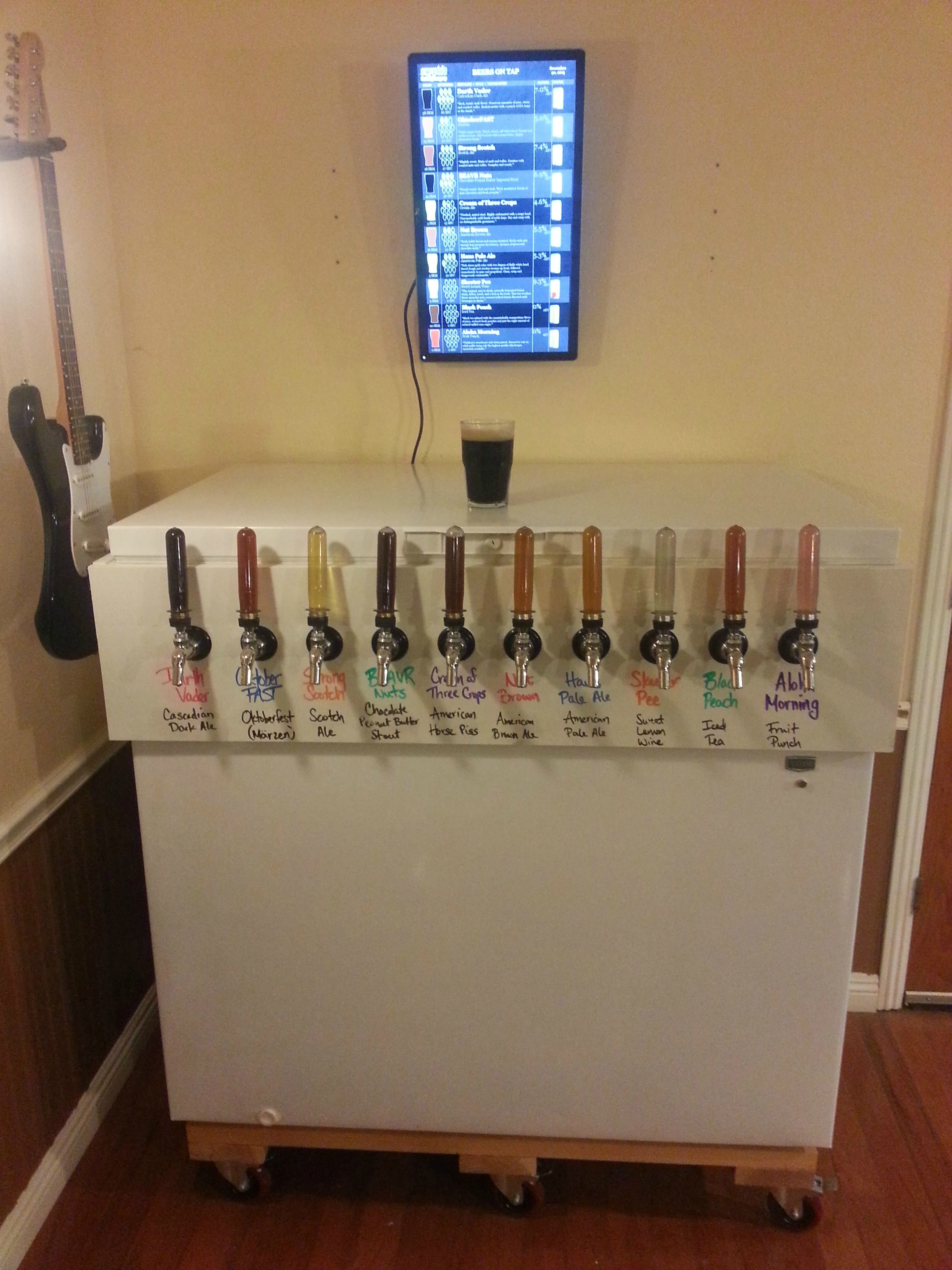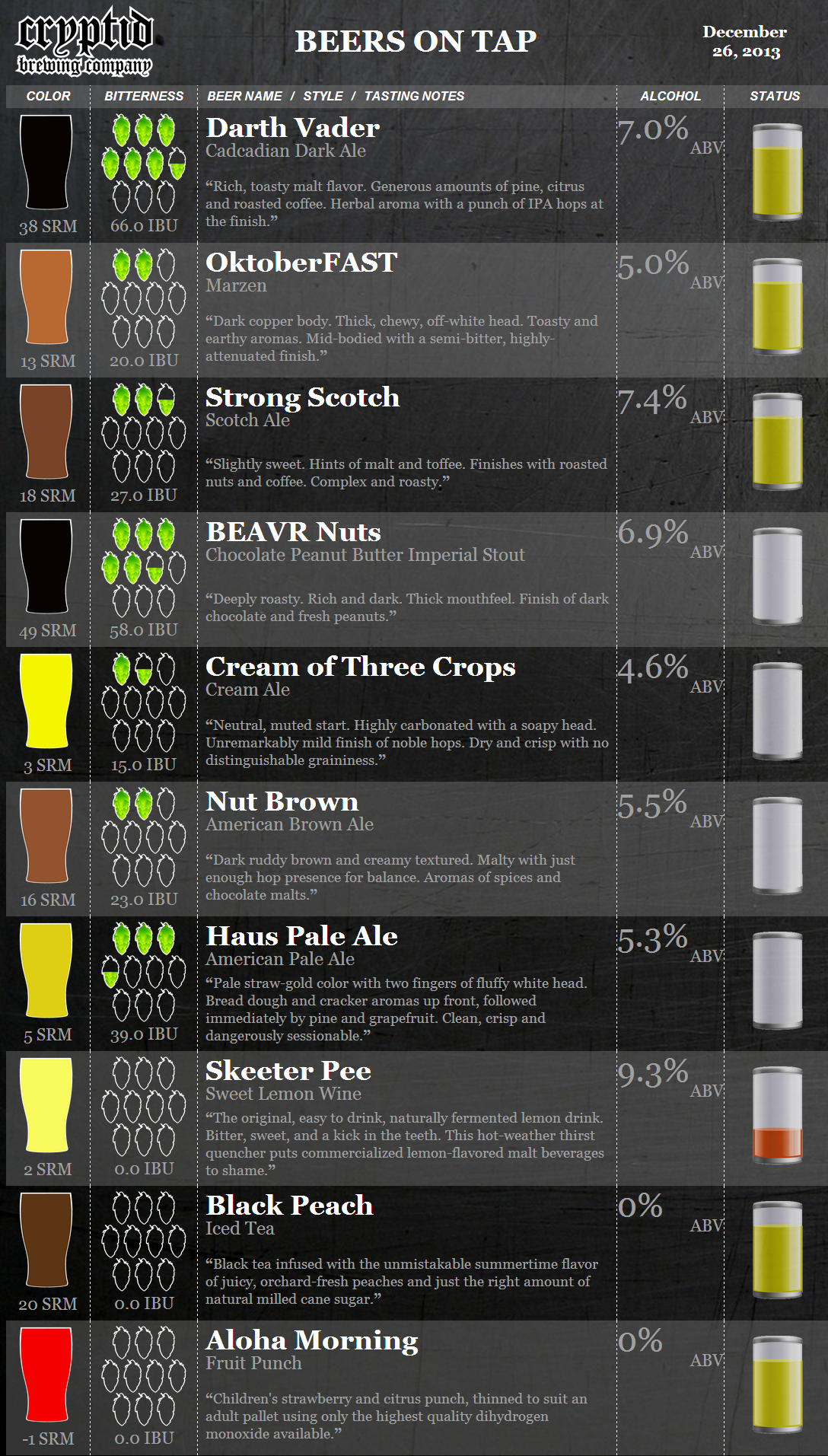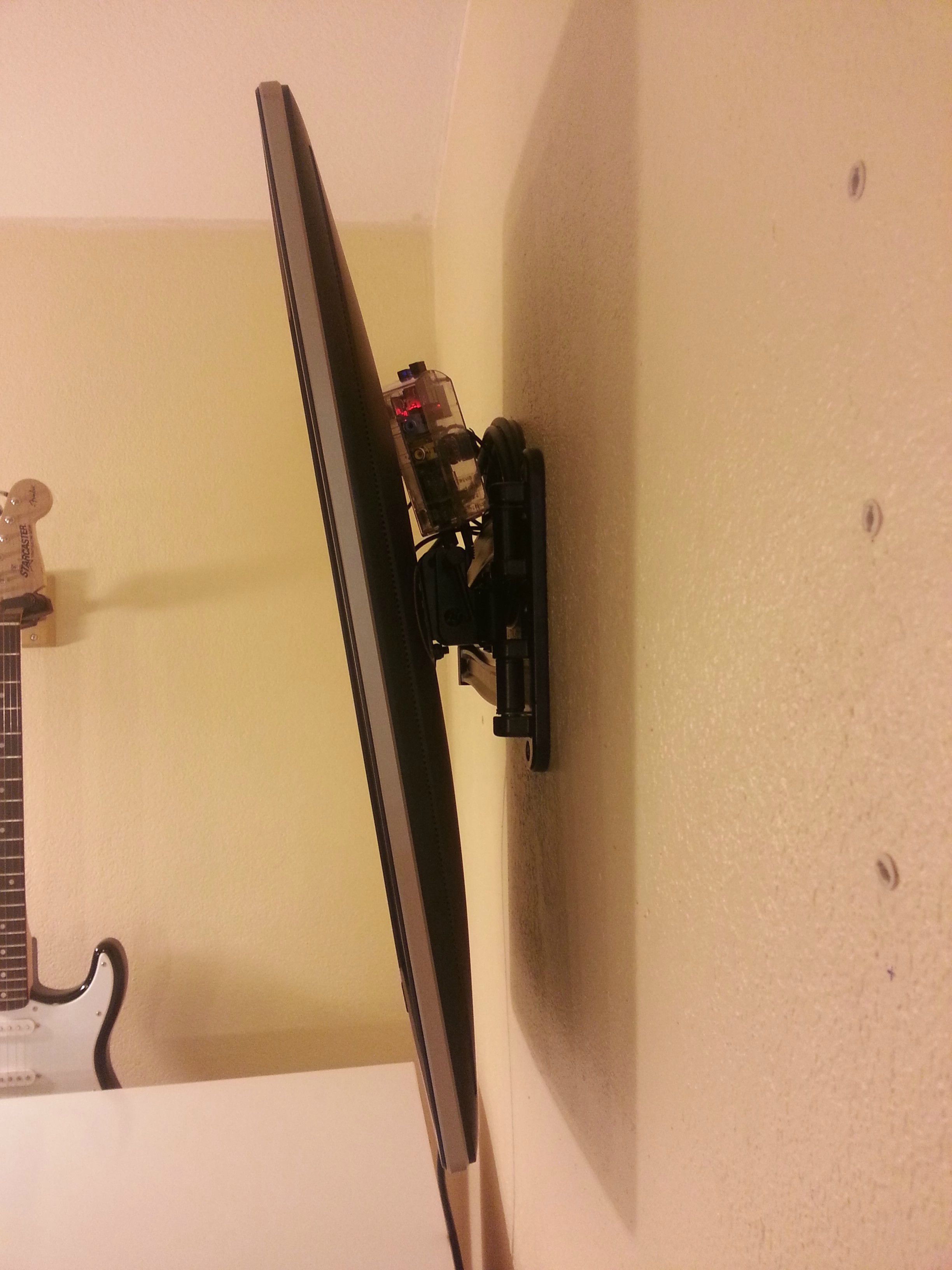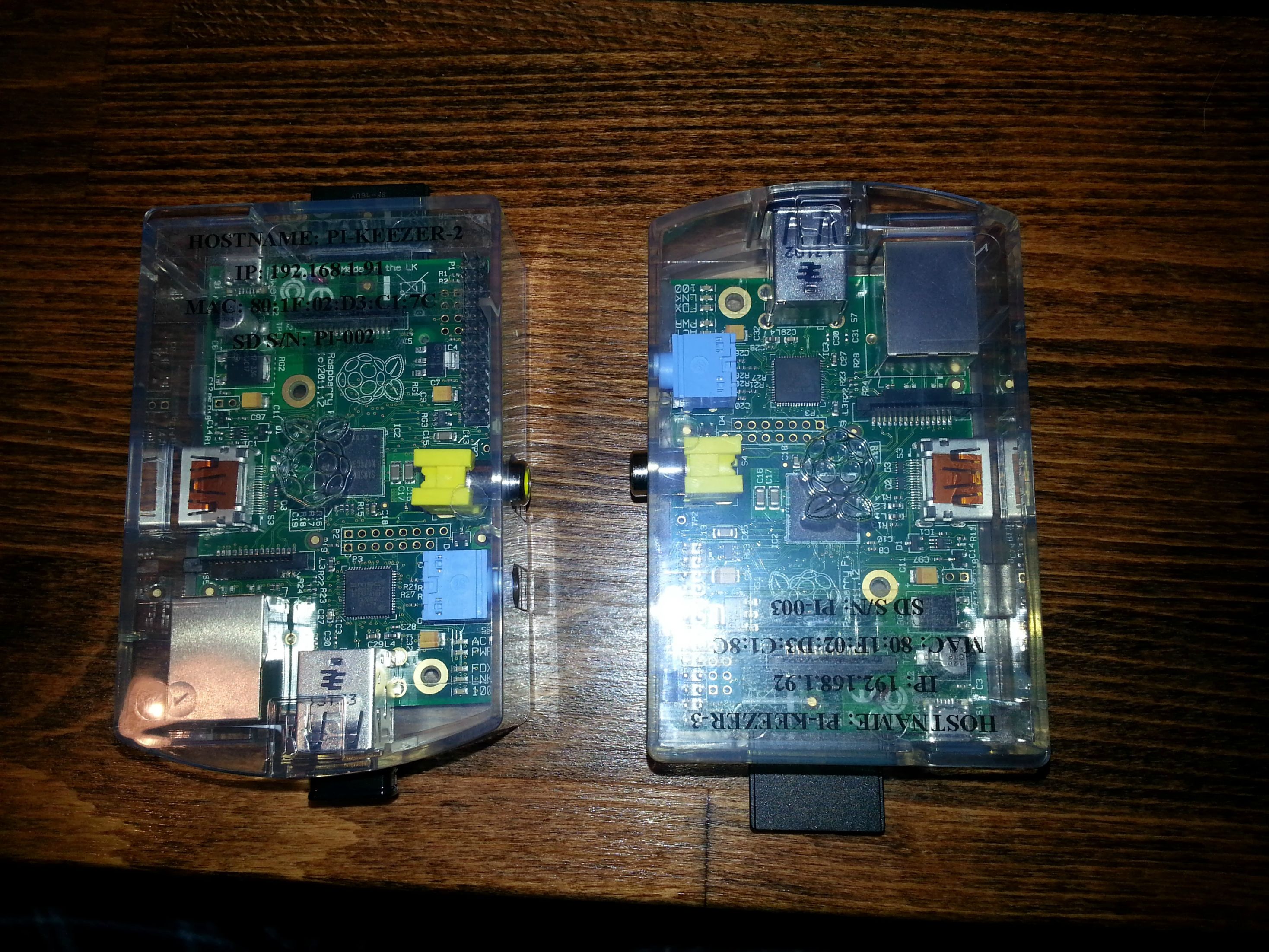A cursory Google search of the site didn't turn up many threads relating to digital tap lists. In fact, only one thread I can find.
I'm currently finishing up a digital taplist. Let's cut to the chase, mmkay. I received the code on which I based my version via a GNU Share-a-Like license. I'm willing to pass on all of my source code and updated graphics under the same license (free for non-commercial or with attribution).
I'm willing to create a step-by-step tutorial from unboxing hardware to up and running, written to be Marine-proof (or even drunken HBTer-proof!). That said, I'm only going to put my time towards such a massive project if it's something that the community here wants.




Would anybody here be interested in something like this for their home? Please let me know either by Liking this post, replying, or both.
UPDATE: Made plenty of tweaks since posting the screenshot above. I'm making tens or hundreds of edits a day to the code right now. So instead of updating the screenshot manually, I just made the Pi web-facing and forwarded the ports in my local network.
"What does that mean?!" you say. It means you can check out a live version: http://thadius856.servebeer.com/
Things may look weird at times, as you're seeing my behind-the-scenes edits in real time.
I'm currently finishing up a digital taplist. Let's cut to the chase, mmkay. I received the code on which I based my version via a GNU Share-a-Like license. I'm willing to pass on all of my source code and updated graphics under the same license (free for non-commercial or with attribution).
I'm willing to create a step-by-step tutorial from unboxing hardware to up and running, written to be Marine-proof (or even drunken HBTer-proof!). That said, I'm only going to put my time towards such a massive project if it's something that the community here wants.




Would anybody here be interested in something like this for their home? Please let me know either by Liking this post, replying, or both.
UPDATE: Made plenty of tweaks since posting the screenshot above. I'm making tens or hundreds of edits a day to the code right now. So instead of updating the screenshot manually, I just made the Pi web-facing and forwarded the ports in my local network.
"What does that mean?!" you say. It means you can check out a live version: http://thadius856.servebeer.com/
Things may look weird at times, as you're seeing my behind-the-scenes edits in real time.


